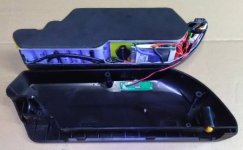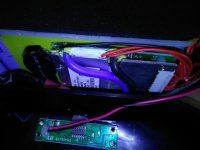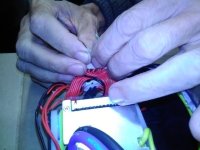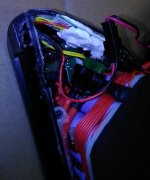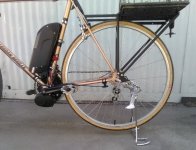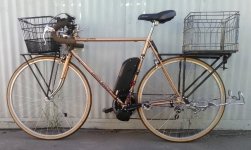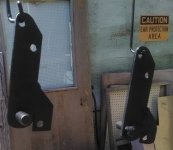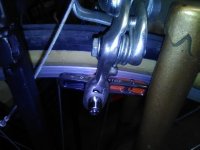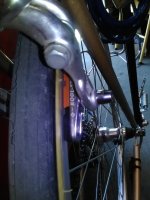As I reported in my first outing with my bike reborn as a butterfly, the electrical system cut out three times, I think, in the first 22 miles - not often enough to be serious trouble but definetly a concern and a potential safety risk if it cut out at the wrong moment. As I reported earlier, when I returned, I put it on the charger and it behaved normally.
I had further cut out issues on the next substantial ride, a ride of some 16 miles or so. On the outbound half of the journey, it didn't cut out at all that I can recall. But about two or three miles into the return leg (about 11 or 12 miles in all) it started to cut out more and more frequently. It would restart OK, but at some point it refused to restart at all. During these restarts - after the first few - I tried disconnecting and reconnecting the bullet electrical connectors that link the battery to the rest of the system, but it didn't help. At some point it would turn off as soon as it turned on and later it wouldn't turn on at all.



I didn't want to report on it until I had more information - I was unsure if it was the pack or the TSDZ2.
I contacted the battery seller who is also the maker, and they gave both authorization and directions on taking the pack apart and analyzing what's going on.
In the images below, you can see taking it apart. I contacted a friend of mine who's an electrical engineer who has worked extensively with automotive EVs, and he got his volt meter and joined me in the work.
We did the work in two phases, first a less invasive, just trying to reconnect things and look for anything obviously wrong, then putting it back together to see if there was any change, and when that didn't work, we then took it apart again and collected cell voltage readings and wrote them all down.
We collected more data than anyone would probably want or could make use of because there are several different sets of data: one from before we took the battery casing apart, another with it apart the first time, another set after it went back together from that first time, then a set of data from the second time we took it apart, and then, finally, some more data after we had it back together. However, the readings didn't change much except that at a few points the battery assembly seemed to be OK and other times it was clearly not OK.
The bottom line of all this is that it has an intermittent discharge problem. We got it to work for a few minutes, and then it quit working, just as it had done for me from the very first ride, though the length of time it works has reduced considerably. When working, it seems to do just fine. Again, at first, it - the TSDZ2 - just turned itself off, but would turn on again immediately and work, and get serious power out of it. Later, on the second ride, it turned off more and more frequently, then finally wouldn't go on at all. This same pattern continues to today.
Evidence collected from when it was apart the second time points to a bad BMS - Battery Management System - and not a pack wire or the pack itself since we were getting 53.6v from the fuse input to pack ground but at that same moment only variously 25 to 29v coming out of the output pins where the battery casing attaches to the battery mounting bracket. Yet, at other times, we got full pack voltage on those same pins.
Here's the voltage data from the FOURTEEN (I expected 13!) pairs of wires at the "BMS balance plug":
1 - 4.14
2 - 4.14
3 - 4.13
4 - 4.13
5 - 4.13
6 - 4.13
7 - 4.12
8 - 4.12
9 - 4.13
10 - 4.13
11 - 4.13
12 - 4.13
13 - 4.13
14 - 4.13
The vendor says the 14th pair are "just grounds" but if true, it should no provide a voltage, so this is an unresolved mystery.
We didn't have a means to discharge and do the other testing discussed in the document the vendor shared. But again, my perception is that the cells themselves have nothing to do with this. Otherwise, it wouldn't cut out during a ride, then, a few minutes later, after having done nothing but turn it back on, deliver stunningly good performance as I rode up some very steep hills. At least, that's my perception; if there were bad cells, they'd stay bad until some action was taken.
The vendor agrees with my basic analysis and are shipping a new BMS - it's not hazardous cargo, it's small, light, should be able to get here quickly - and I'll install it and see where we are.
Meanwhile, a "backup battery" would be a great thing. I assume there are other battery sizes that are built into cases that would fit this same mounting system... Now I'd like to find them but I haven't found time to look - the casing has the name "Reention". I presume I'll find something when I do a search, but if any of you reading this thread already know, I'd appreciate any pointers.



